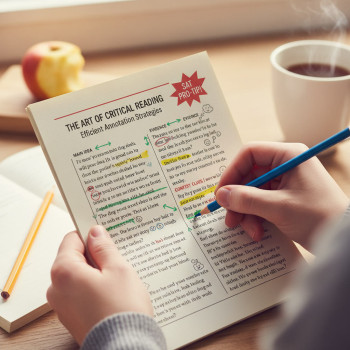Two Weeks to Go: Why calm focus beats frantic cramming
Two weeks before the SAT is not cause for panic; it is a moment for precision. You have enough time to sharpen timing, shore up weak areas, and turn a handful of predictable mistakes into points. This post gives you a practical, human plan — not a miracle overnight hack — that organizes the remaining days into useful work, rest, and test simulations.
Think of this as tuning an instrument. If your techniques and knowledge are already installed, these 14 days are about adjustment: remove the buzz, reinforce the reliable parts, and practice performing under real conditions. If you’re behind on some content, we’ll prioritize high-leverage topics that return the most points for the least time.

First rule: mindset over miracles
The single most important move is to craft a realistic, compassionate mindset. You can make noticeable gains in two weeks, but only with focused effort and smart rest. Replace the phrase i have to with i will, and plan specific actions. Small, repeated wins build confidence — finish a problem set, improve pacing by five minutes on a practice section, cut careless errors by half.
Start with a quick diagnostic (Day -14)
Begin by taking one full, timed, official practice test under realistic conditions. Treat it like the real exam: start at the scheduled time, use a timer, no phone, full breaks allowed. The point is not the score alone but the data:
- Which section drains your time?
- Where do most mistakes come from: careless errors, lack of content knowledge, or pacing?
- Are there recurring trouble spots: algebra with functions, line graphs, inference questions in reading, or punctuation rules?
Record your raw section scores, time per question (approximate), and note the top three patterns you see. This quick diagnostic will shape the 14-day plan so that every hour counts.
A two-week calendar you can actually follow
Below is a balanced schedule that mixes practice tests, focused content review, timed section practice, and recovery. The plan assumes about 1.5 to 4 hours on weekday days and 4 to 6 hours on full practice-test days; adjust to your energy and obligations.
| Day | Focus | Suggested Time |
|---|---|---|
| Day 14 (Diagnostic) | Full timed practice test + error log | 4–5 hours |
| Day 13 | Review diagnostic, target weakest topic | 2 hours |
| Day 12 | Timed Math sections + focused content review | 2–3 hours |
| Day 11 | Timed Reading + Writing sections | 2–3 hours |
| Day 10 | Full practice test | 4–5 hours |
| Day 9 | Error log review + targeted practice | 2 hours |
| Day 8 | High-frequency math topics + timed drills | 2–3 hours |
| Day 7 | Reading strategies + vocabulary in context | 2–3 hours |
| Day 6 | Full practice test | 4–5 hours |
| Day 5 | Error log deep dive + timing drills | 2 hours |
| Day 4 | Quick content brush-up and light practice | 1.5–2 hours |
| Day 3 | Short, timed sections focusing on weakest areas | 1.5–2 hours |
| Day 2 | Full dress rehearsal: timed sections at test time | 3–4 hours |
| Day 1 (Night before) | Rest, light review of formulas and strategy | 30–60 minutes |
| Test Day | Execute calmly | Follow checklist |
How to use this calendar
Make each study block specific. Instead of vague goals like study math, write: complete 20 medium-difficulty algebra problems, review incorrect answers from practice test 2, and time yourself on 12 questions. Specificity creates momentum and clarity.
Daily routine template (what to do each study session)
- Warm-up (10 minutes): quick review of formulas, common grammar rules, or mental math drills.
- Targeted work (40–90 minutes): focus on the day’s chosen weakness using problems you haven’t seen recently.
- Timed practice (20–45 minutes): take a section or set of problems under time constraints.
- Review (20–40 minutes): correct every problem you missed, rewrite explanations in your own words, and log the mistake type.
- Finish with a short reflection (5 minutes): note one small success and one action for the next session.
Week 1: Build accuracy and review core content
Use the first week to plug content gaps and to create an error log you will revisit. The goal is to reduce careless mistakes and to make sure the foundation is secure.
Math: prioritize high-return topics
In two weeks, you get more points by mastering common, high-frequency areas than by chasing obscure problems. Focus on:
- Algebra: linear equations, systems, and manipulating expressions
- Problem solving and data analysis: ratios, percentages, interpreting graphs
- Advanced topics on the SAT: quadratic formulas, functions basics, and simple trigonometry only if present in your diagnostic
Practice strategy example: when you miss an algebraic manipulation, rewrite the problem and annotate where the algebra went wrong. Often errors are small—sign errors, dropped parentheses. Fixing those reduces mistakes dramatically.
Reading and Writing: strategies over brute force
For reading, focus on passage mapping and question triage: quickly note passage genre, author tone, and paragraph function. For writing, study common grammar patterns—subject-verb agreement, verb tense, pronoun clarity, and comma usage.
Practice strategy example: time yourself for 10–12 reading questions but stop to label question types (detail, inference, vocabulary-in-context). After a session, tally which question types you miss most and prioritize those.
Week 2: Simulate the test and refine timing
Week two is where you shift to performance. More full practice tests, timed sections, and strict review. Your aim is to convert content knowledge into consistent performance under time pressure.
Practice test cadence
Take two or three full tests in the second week, spaced out with light review days between them. Full tests reveal stamina and pacing issues that section practice cannot. After every test:
- Do a thorough error analysis — not just which questions you missed, but why.
- Identify whether errors are content gaps, timing pressure, or careless mistakes.
- Create a micro-plan to fix the top two recurring errors before the next test.

Pacing drills that work
Time per question matters. Use these drills:
- Section compression: take a 45-question math section but stop after 30 minutes to see which problems you could have skipped and which you solved fast.
- Speed rounds: set a 5-minute timer for 10 reading questions and force triage: easy first, then medium, leave hard ones if time runs out.
- Single-problem mastery: pick the most common problem type you miss and do 10 similar items in a row until you make fewer careless errors.
How to review errors so they stop repeating
An error log is your most valuable asset in the last two weeks. For each missed question, capture:
- Question source and number
- Truth: the right answer and why
- Root cause: content gap, careless mistake, misreading, or timing
- Action: what you will do to avoid this in the future (e.g., slow down and underline the question stem; review a specific grammar rule)
Review this log every other day and mark items as resolved only when you consistently get similar problems right on timed practice.
Content quick-reference: what to prioritize in two weeks
| Domain | High-leverage items | Why it matters |
|---|---|---|
| Algebra | Linear equations, systems, function interpretation | 70% of math questions are algebra-based; mastery yields many easy points |
| Problem Solving & Data Analysis | Ratios, percents, proportional reasoning, interpreting graphs | Frequent real-world context questions where working methodically saves time |
| Heart of Reading | Inference, main idea, evidence-based reading | Getting passage structure right helps on half the questions |
| Writing and Language | Verb tense, subject-verb agreement, sentence structure | Grammar patterns repeat; rule drills are effective |
Test-day logistics and small tactical moves
Several small, practical habits add up to a calmer test day and better performance. Prepare these in advance:
- Know your test center: address, start time, and how long it will take to get there.
- Pack the night before: admission ticket or ID, approved calculator with fresh batteries, pencils, eraser, snack, and water.
- Sleep and nutrition: aim for 7–9 hours and avoid heavy, greasy meals before the test; choose a balanced breakfast with protein and slow carbs.
Morning-of timing tips
Start with a short warm-up: one or two easy arithmetic or grammar drills to wake your brain. Avoid last-minute cramming of complex topics — this often increases anxiety. Bring a small sheet with formulas and reminders, and use it to calm nerves, not to learn new material.
During the test: tactical reminders
- Read question stems first on reading passages to know what to look for while skimming.
- For math, estimate before you compute: can you eliminate answers by approximation?
- If a question is taking too long, flag it, guess intelligently, and move on. Getting to the easier problems earns more points.
- Use breaks wisely: breathe, move, have a small snack. Reset rather than replaying an incorrect question in your head.
Stress management: practical, science-backed approaches
Stress reduces working memory and slows decision-making. Use simple techniques that work in short windows:
- Box breathing: inhale 4 seconds, hold 4, exhale 4, hold 4 — repeat for 60–90 seconds to lower heart rate.
- Grounding: notice five things you see, four you can touch, three you hear, two you smell, one you taste — this brings attention back to the present.
- Micro-breaks: during the official break, stand up, stretch, and briefly get outside air if possible. Physical movement resets focus.
What about the SAT essay?
As of recent policies, the SAT Essay is not offered as part of the standard test. Only a few institutions may still require a separate written assessment. Check your test registration and any college requirements well before test day. If for some reason you must prepare a timed essay, practice with a clear template: read prompt, plan 5–7 minutes, write two to three evidence paragraphs, and leave one minute to proofread.
How personalized tutoring and AI-driven insights can help in two weeks
When time is tight, an expert guide speeds things up. Personalized 1-on-1 tutoring can quickly diagnose subtle, recurring errors that self-study often misses: a pattern of misreading negated questions, a consistent algebraic slip, or a pacing habit that costs you time. Tutoring that pairs human feedback with AI-driven insights helps by rapidly identifying your biggest scoring opportunities and creating a tailored study plan for the final days.
For example, working with a tutor who can watch a practice test and give immediate feedback on pacing, or using AI tools to analyze your error log for patterns, turns scattered practice into a focused plan. If you have access to Sparkl’s personalized tutoring, short, targeted sessions in the last two weeks — focusing on your error log, pacing drills, and realistic test simulations — often deliver measurable improvements. The right tutor will also help you stay accountable and calm.
Final 48 hours: what to do and what to skip
Two days before: take a short, timed section or a lighter practice test and review errors briefly. The goal is to keep your skills warm, not to exhaust them.
The night before: prepare your bag, set multiple alarms, and do a thirty- to sixty-minute light review — formula sheet, grammar checklist, and a brief set of familiar problems. Finish any studying at least an hour before bed and spend time doing something relaxing.
Test-morning checklist
- Photo ID and admission ticket if required
- Approved calculator with fresh batteries, pencils and eraser
- Comfortable clothes with layers
- Snack and water for breaks
- Printed or memorized directions to the test center
After the test: immediate next steps
Right after the test, give yourself some recovery time — celebrate finishing. When you’re ready, reflect: how did your pacing feel? Which question types still caused trouble? If you’re planning a retake, use the insights from this test to design the next round; you now have a fresh diagnostic.
Final encouragement and realistic expectations
Two weeks is enough to make focused improvements, especially if you work smart. The biggest gains come from fixing a handful of recurring mistakes and building reliable pacing strategies. Be realistic, but also firm with your plan. Track progress with a simple metric: fewer careless errors, more completed sections, or improved time per question.
If you can, use the resources available to you: focused practice, reliable practice tests, and targeted tutoring. Sparkl’s 1-on-1 guidance, tailored study plans, and AI-driven insights are examples of support that can accelerate your last-week prep, but remember — tools are only as useful as the focused work you pair with them.
Closing: a small daily promise
For the next 14 days, promise yourself three small commitments: a specific study goal each session, a short review of every missed problem, and a nightly wind-down that protects sleep. Two weeks of thoughtful, targeted work will leave you calmer, more confident, and better prepared on test day. You can do this — steady, strategic work wins.


















No Comments
Leave a comment Cancel